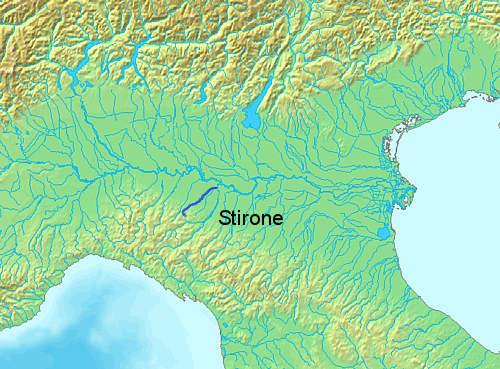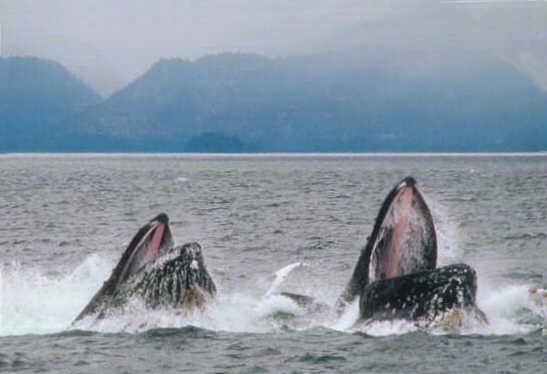Plesiobalaenoptera on:
[Wikipedia]
[Google]
[Amazon]
''Plesiobalaenoptera'' is a
 ''Plesiobalaenoptera'' was similar in appearance to other rorquals, although it had a relatively wider
''Plesiobalaenoptera'' was similar in appearance to other rorquals, although it had a relatively wider
 Unlike living rorquals, ''Plesiobalaenoptera'' was probably not capable of
Unlike living rorquals, ''Plesiobalaenoptera'' was probably not capable of
genus
Genus ( plural genera ) is a taxonomic rank used in the biological classification of extant taxon, living and fossil organisms as well as Virus classification#ICTV classification, viruses. In the hierarchy of biological classification, genus com ...
of extinct rorqual
Rorquals () are the largest group of baleen whales, which comprise the family Balaenopteridae, containing ten extant species in three genera. They include the largest animal that has ever lived, the blue whale, which can reach , and the fin wha ...
which existed in Italy during the late Miocene
The Miocene ( ) is the first geological epoch of the Neogene Period and extends from about (Ma). The Miocene was named by Scottish geologist Charles Lyell; the name comes from the Greek words (', "less") and (', "new") and means "less recen ...
epoch. The type species
In zoological nomenclature, a type species (''species typica'') is the species name with which the name of a genus or subgenus is considered to be permanently taxonomically associated, i.e., the species that contains the biological type specimen ...
is ''P. quarantellii''. It is the oldest known rorqual from the Mediterranean basin
In biogeography, the Mediterranean Basin (; also known as the Mediterranean Region or sometimes Mediterranea) is the region of lands around the Mediterranean Sea that have mostly a Mediterranean climate, with mild to cool, rainy winters and w ...
. Fossils have been found from sediments of the Stirone River in northern Italy (, paleocoordinates ) that were deposited during the Tortonian
The Tortonian is in the geologic time scale an age or stage of the late Miocene that spans the time between 11.608 ± 0.005 Ma and 7.246 ± 0.005 Ma (million years ago). It follows the Serravallian and is followed by the Messinian.
The Torton ...
age, around .
Description
 ''Plesiobalaenoptera'' was similar in appearance to other rorquals, although it had a relatively wider
''Plesiobalaenoptera'' was similar in appearance to other rorquals, although it had a relatively wider rostrum
Rostrum may refer to:
* Any kind of a platform for a speaker:
**dais
**pulpit
* Rostrum (anatomy), a beak, or anatomical structure resembling a beak, as in the mouthparts of many sucking insects
* Rostrum (ship), a form of bow on naval ships
* Ros ...
than other whales. The genus has several distinguishing features mainly seen in the region of the ear. For example, the periotic bone The periotic bone is the single bone that surrounds the inner ear of mammals. It is formed from the fusion of the prootic, epiotic, and opisthotic bones.
References
External links
* http://www.encyclopedia.com/doc/1O8-perioticbone.html
...
(which surrounds the inner ear
The inner ear (internal ear, auris interna) is the innermost part of the vertebrate ear. In vertebrates, the inner ear is mainly responsible for sound detection and balance. In mammals, it consists of the bony labyrinth, a hollow cavity in the ...
) has a raised central portion and a triangular projection at its front.
Like all baleen whale
Baleen whales (systematic name Mysticeti), also known as whalebone whales, are a parvorder of carnivorous marine mammals of the infraorder Cetacea (whales, dolphins and porpoises) which use keratinaceous baleen plates (or "whalebone") in their ...
s, the tympanic bulla
The tympanic part of the temporal bone is a curved plate of bone lying below the squamous part of the temporal bone, in front of the mastoid process, and surrounding the external part of the ear canal.
It originates as a separate bone (tympanic ...
, which surrounds the middle ear
The middle ear is the portion of the ear medial to the eardrum, and distal to the oval window of the cochlea (of the inner ear).
The mammalian middle ear contains three ossicles, which transfer the vibrations of the eardrum into waves in the ...
, is enlarged and separate from the periotic bone. However, its tympanic bulla has a distinctive high keel. Moreover, the opening of the Eustachian tube
In anatomy, the Eustachian tube, also known as the auditory tube or pharyngotympanic tube, is a tube that links the nasopharynx to the middle ear, of which it is also a part. In adult humans, the Eustachian tube is approximately long and in d ...
into the middle ear is in a high position.
Paleobiology
 Unlike living rorquals, ''Plesiobalaenoptera'' was probably not capable of
Unlike living rorquals, ''Plesiobalaenoptera'' was probably not capable of ram feeding
Aquatic feeding mechanisms face a special difficulty as compared to feeding on land, because the density of water is about the same as that of the prey, so the prey tends to be pushed away when the mouth is closed. This problem was first identifi ...
. During ram feeding, modern whales swim toward their prey with open mouths and engulf them in an expandable throat.
''Plesiobalaenoptera'' has a postcoronoid fossa, or hole in the dentary bone
In anatomy, the mandible, lower jaw or jawbone is the largest, strongest and lowest bone in the human facial skeleton. It forms the lower jaw and holds the lower teeth in place. The mandible sits beneath the maxilla. It is the only movable bone ...
of the lower jaw, which would have made this method of feeding difficult to perform.
Classification
''Plesiobalaenoptera'' is closely related to ''Parabalaenoptera
''Parabalaenoptera'' is a genus of prehistoric baleen whale found in Marin County, California. The type species is ''P. baulinensis''. It was estimated to be about the size of the modern gray whale, about long. It lived during the late Miocene ...
'', known from the late Miocene of California
California is a U.S. state, state in the Western United States, located along the West Coast of the United States, Pacific Coast. With nearly 39.2million residents across a total area of approximately , it is the List of states and territori ...
in the United States
The United States of America (U.S.A. or USA), commonly known as the United States (U.S. or US) or America, is a country primarily located in North America. It consists of 50 states, a federal district, five major unincorporated territorie ...
. The two form a clade that is the sister taxon
In phylogenetics, a sister group or sister taxon, also called an adelphotaxon, comprises the closest relative(s) of another given unit in an evolutionary tree.
Definition
The expression is most easily illustrated by a cladogram:
Taxon A and t ...
of crown
A crown is a traditional form of head adornment, or hat, worn by monarchs as a symbol of their power and dignity. A crown is often, by extension, a symbol of the monarch's government or items endorsed by it. The word itself is used, partic ...
balaenopterids, which includes the last common ancestor
In biology and genetic genealogy, the most recent common ancestor (MRCA), also known as the last common ancestor (LCA) or concestor, of a set of organisms is the most recent individual from which all the organisms of the set are descended. The ...
of the living ''Balaenoptera
''Balaenoptera'' () is a genus of rorquals containing eight extant species. ''Balaenoptera'' comprises all but two of the extant species in its family (the humpback whale and gray whale); the genus is currently polyphyletic, with the two aforem ...
'' and ''Megaptera
The humpback whale (''Megaptera novaeangliae'') is a species of baleen whale. It is a rorqual (a member of the family Balaenopteridae) and is the only species in the genus ''Megaptera''. Adults range in length from and weigh up to . The hump ...
'', and all of its descendants.
References
{{Taxonbar, from=Q3906651 Miocene cetaceans Prehistoric mammals of Europe Prehistoric cetacean genera Fossil taxa described in 2010